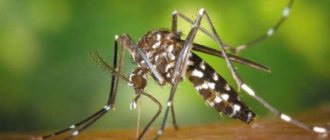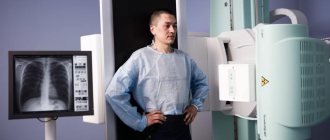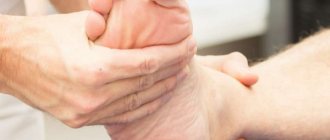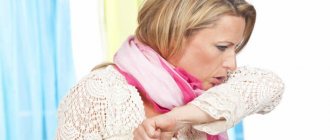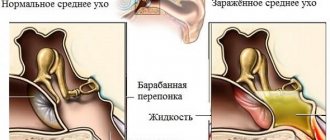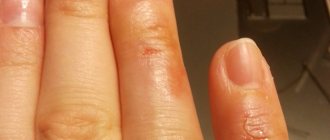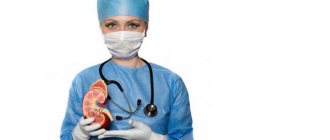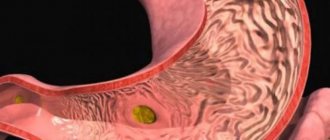Contrary to popular belief, urolithiasis is not a direct consequence of poor diet or drinking hard water. Although both factors play an important role in the occurrence of the disease. In fact, the formation of kidney stones occurs due to metabolic disorders caused by internal or external reasons.
Due to the fact that the incidence of urolithiasis increases by 0.5-1% annually and the largest proportion of patients is the working population from 25 to 50 years old, the problem of how to remove kidney stones in the least traumatic way is becoming increasingly urgent.
Causes of urolithiasis
The main factors influencing the increase in the incidence of urolithiasis include:
- a sedentary lifestyle leads to impaired metabolism of minerals (phosphorus and calcium);
- poor nutrition (predominance of protein foods in the diet);
- unfavorable climatic or living conditions;
- ecological problems;
- inflammatory urinary tract diseases;
- changes in the normal structure of the urinary tract, preventing the outflow of urine;
- hereditary genetic disorders.
In all cases of diagnosing urolithiasis, several factors can be noted that have a direct impact on the formation of kidney stones.
Due to the fact that in 95% of cases the course of the disease is recurrent, it is obvious that removing kidney stones is not a cure, since in order to prevent recurrent disease it is necessary to remove all factors that have a direct or indirect effect on the development of the pathology.
Smoking is one of the factors contributing to the development of urolithiasis
Nephrolithiasis and pregnancy
Kidney stones during pregnancy are a rare occurrence. Pregnancy itself does not contribute to the formation of stones, but is a risk factor, especially for women over 35 years of age. The most common causes of stone formation during this period are associated with disorders:
- metabolism;
- outflow of urine;
- acidity of urine;
- hormonal background.
Pregnancy does not cause stone formation, but is a risk factor
If nephrolithiasis is diagnosed before pregnancy, the stone may move due to compression of the ureters that occurs as the fetus grows.
The risk of formation of urate stones and sand exists with severe edema due to increased urine concentration.
In case of painful and prolonged renal colic, it is necessary to call an ambulance, because an attack can provoke premature birth. In other cases, there is no risk to the health of the mother and unborn child. If even small signs of kidney stones appear, you must contact a urologist or nephrologist, undergo an examination and obtain a doctor’s prescription.
Basic principles of treatment
Thanks to the evolution of modern medicine, there has been a significant decrease in the incidence of large staghorn calculi. However, there is a tendency towards an increase in the incidence of mild forms of the disease, the treatment of which allows one not to resort to surgery and to get rid of kidney stones without surgery.
Today there is a generally accepted classification of uroliths:
- Calcium-forming compounds (found in more than 75% of cases of the disease) - calcium carbonate, oxalates, phosphates.
- Stones containing magnesium (occur in about 10% of cases) - struvite, newberite, magnesium phosphate monohydrate.
- Uric acid formations (account for more than 10% of all cases of the disease) - sodium urate, uric acid dihydrate, ammonium urate.
- Protein (cystine) stones (less than 1% of cases).
Due to various processes occurring in the body, including infectious ones or due to metabolic disorders, in 50% of cases the formation of mixed type uroliths is observed.
To develop therapeutic tactics, it is necessary to have complete information about the structure of the formed stones, since it is the chemical elements that form the basis of the urolith that determine the further steps aimed at removing stones from the kidneys.
When treating urolithiasis, the doctor must take an individual approach to choosing a treatment regimen for each patient.
The basic principles of treatment of urolithiasis are based on:
- Corrective effect on urine acidity.
- Compensation for existing metabolic disorders - diet therapy, adequate drinking regimen, physical therapy.
- Improving diuresis (stone expulsion tactics).
- Grinding and subsequent removal of the stone using the method of external shock wave lithotripsy (ESW).
Diagnosis of nephrolithiasis
The diagnosis is made based on typical symptoms, laboratory tests and additional instrumental studies. General and biochemical tests of urine and blood show the concentration of urine, its acidity, composition and the cause of the stone. Symptoms of renal colic are similar to signs of other pathologies:
- acute appendicitis;
- pancreatitis;
- intestinal obstruction;
- ectopic pregnancy;
- cholecystitis.
Differential diagnosis is carried out using:
- Ultrasound of the abdominal organs, showing the condition of the pancreas, gallbladder and ducts;
- Ultrasound of the kidneys, which determines anatomical deviations in the structure of the kidneys, the presence of stones, their size, location and movement;
- urography (kidney x-ray) - the most accurate method for identifying most stones;
- pyelography and excretory urography to identify protein and urate stones that are not visible on x-rays.
In the image obtained during excretory urography, you can see stones in different parts of the urinary system (in this photo there are staghorn stones in both kidneys)
If necessary, resort to magnetic resonance or computed tomography of the kidneys.
Change in urine acidity
As is known, an increased concentration of salts in the urine does not necessarily lead to stone formation. The decisive factor determining the presence of crystals in dissolved (suspended) form is the acidity of the urine. Normal urine pH is in the range of 5.5-7.0. Impact on this indicator allows not only to prevent relapses of the disease, but also to successfully dissolve existing stones.
For example, long-term use of drugs intended for reabsorption of stones (Uralit U, Marelin, Blemaren, Soluran) allows you to completely dissolve kidney stones within 2-3 months. Unfortunately, a similar effect is observed only when treating stones consisting of uric acid.
With regard to formations of other types, dissolution tactics are not effective enough and are rather supportive in nature, which does not allow the stone to be completely removed.
The drug Uralit U is a citrate mixture that has an alkalizing effect on urine and helps remove uric acid stones
Due to the high likelihood of side effects, before prescribing treatment, it is important to conduct an examination to clarify the following questions:
- Are there any concomitant diseases?
- Are there any abnormalities in kidney and liver function?
- The likely degree of effectiveness of the selected drug.
- Are there any side effects from taking the drug?
The main criterion for the effectiveness of stone-dissolving therapy is an increase in the acid-base balance of urine to 6.3-6.9.
Features of nephrolithiasis in children
Childhood nephrolithiasis is most often associated with genetic predisposition and urinary tract infections. The pathology occurs with equal frequency in children of both sexes, although recurrent stone formation and staghorn calculi are recorded in most cases in boys. The main age of patients is from 3 to 11 years. Causes of nephrolithiasis:
- bacteria that change the composition of urine, which contributes to the formation of oxalate and phosphate stones;
- hereditary metabolic characteristics (improper absorption of calcium in the large intestine);
- disruption of the parathyroid glands;
- a diet with plenty of meat, legumes, and some types of fish containing purines (their final product is uric acid);
- improper drinking regime.
Clinically, the disease manifests itself as renal colic. The child is worried and constantly tries to take a comfortable position to relieve the pain. His temperature rises, nausea and vomiting, and sweating begin. Babies do not have typical symptoms of renal colic. The child may have a slight fever and worry.
Diagnosis and treatment of nephrolithiasis in children is carried out in the same way as in adult patients. The child is assigned:
- strict diet;
- drugs that correct calcium metabolism;
- vitamin complexes;
- antispasmodics;
- antibiotics if there is a urinary tract infection.
Surgical intervention is indicated in the absence of effect from conservative treatment.
Normalization of metabolic processes
The goal of therapeutic measures aimed at removing kidney stones is to eliminate metabolic disorders, which result in an increase in the concentration of salts in the urine.
Diet therapy
Diet for urolithiasis
The therapeutic effect of diet therapy is to reduce the amount of salts in the urine by limiting their intake from food. Correction of the diet depends on the characteristics of the existing stones. So, to normalize purine metabolism (with uric acid stones), it is recommended to completely exclude from the diet:
- fried or smoked meat;
- legumes;
- strong meat broths;
- alcohol;
- coffee;
- cocoa;
- spices.
When combining diet therapy and reabsorbing drugs (citrate mixtures), small stones are completely removed within 3 months and large ones within 6 months.
A urolith with a diameter of more than 0.5 cm is considered large.
To normalize the metabolism of oxalic acid (with calcium oxalate stones), it is necessary to limit the use of:
- cheese;
- milk and dairy products;
- salad;
- sorrel;
- strawberries;
- spinach;
- chocolate;
- cocoa.
As an addition to diet therapy for oxalate stones, it is advisable to use the following drugs:
- vitamin B complex;
- citrate mixtures (Uralit U, Blemaren);
- magnesium oxide.
Daily fluid intake for any form of urolithiasis should not be less than 2.5 liters.
The diet for calcium phosphate stones involves limiting the consumption of foods containing high amounts of calcium (dairy products) and phosphorus (fish).
Physiotherapy
Therapeutic exercise for urolithiasis has a number of positive effects on the general condition of the body:
- helps normalize metabolic processes;
- increases blood supply to the kidneys;
- improves diuresis;
- helps remove stones from the kidneys.
The set of therapeutic exercises includes the elements shown in the pictures below.
Active warm-up in a standing position
Exercises lying on your back with bending or rotating your knees around the axis of your own body
Squats
Daily jogging in the fresh air, cycling, and swimming also have a positive effect.
Stone expelling tactics
The essence of stone-expelling tactics is the impact on the body of a group of medications, the purpose of which is to expel stones from the kidneys. This approach to treatment is advisable when small stones are detected that can, without harming the body, overcome narrow fragments of the urinary tract (ureters, urethra).
The complex of medicines used to remove stones includes:
- diuretics;
- antispasmodics (No-shpa, Baralgin, Papaverine);
- anti-inflammatory drugs (antibiotics, antibacterial drugs).
Intensive drinking regimen in combination with diuretics improves the flow of urine, and antispasmodics cause relaxation of the smooth muscles of the urinary tract, allowing you to quickly remove the stone without causing pain.
If the size of the stone does not exceed 0.5 cm, stone expulsion therapy is used for cystine stones, since even a 6-month course of citrates does not always contribute to even their partial dissolution.
Herbal preparations are highly effective in removing stones. The herbs included in kidney tea have an effect similar to that of medications and have significantly fewer side effects. Today, many herbal medicines are produced that are widely used in the treatment of urolithiasis:
- Canephron N;
- Phytolysin;
- Urolesan;
- Cyston.
Canephron N has proven itself not only as a drug that removes kidney stones, but also as an effective anti-inflammatory agent
External shock wave lithotripsy
External shock wave lithotripsy (ESWL) is the latest achievement of modern medicine, which allows you to remove kidney stones without surgery. With the help of DLT, stones of any type and almost any size can be removed. The essence of the method is to destroy the calculus by exposing it to short pulses of various types of energy.
The direction of influence of the device is corrected using an X-ray machine or ultrasound. By the end of the procedure, the stone is destroyed into small fragments that can independently pass through the ureters and urethra.
The procedure is carried out in a hospital, followed by a short period of hospitalization, during which crushed stone fragments are removed using stone expulsion therapy.
However, despite its effectiveness, the DLT method is not able to protect against the recurrence of the disease. Therefore, to cure urolithiasis, it is not enough to simply remove kidney stones; an integrated approach is required, including giving up bad habits, eating healthy foods and increasing physical activity.
